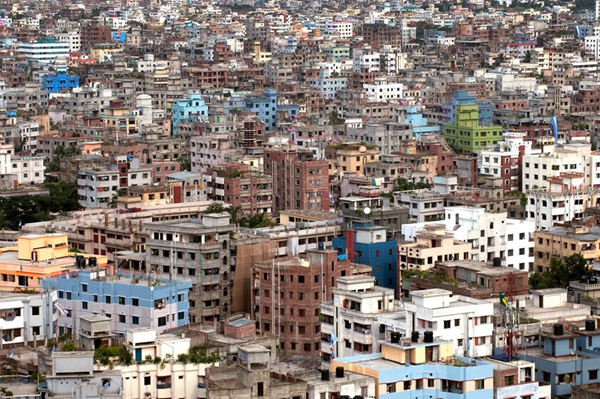How aid now works and why it still matters
china.org.cn / chinagate.cn by Xu Haoliang, March 7, 2017 Adjust font size:
|
|
|
A view of the city of Dhaka, the capital of Bangladesh, which is experiencing rapid urban growth and development. [UN Photo/Kibae Park] |
When I joined the UN in 1994, aid from rich countries to Asia-Pacific nations accounted for more than 10 percent of all money in the region. Today that figure is less than 1 percent - but aid is still indispensable.
Drastic donor funding cuts, reportedly under consideration, would limit our ability to help build a safer and more sustainable world.
Here is why aid still matters.
For decades, international development cooperation was a one-way system providing funds and experts to poorer countries. It catalyzed enormous advances.
We at the United Nations Development Programme (UNDP) specialized in building government, parliamentary and judicial institutions. We trained officials, organized expert exchanges and designed processes.
These institutions then unleashed economic growth. The region's GDP has shot up from about 10 percent of the global figure in the 1950s to nearly 40 percent today.
As economies grew, countries' own resources dwarfed the inflow of foreign aid. This is a seismic shift in the global development system and means our role has changed.
Our new purpose is to help Asia-Pacific governments spend their own money in the best way for their own development.
And big challenges remain - some 300 million people still live in poverty.
Rising inequality, rapid urbanization, aging population, migration, extremism and environmental disasters all require sophisticated solutions.
Some of these issues can have a destabilizing effect much further afield, including on countries in North America and Europe.
UNDP is tackling these challenges. Our $1 billion portfolio of development projects in Asia-Pacific - largely funded by aid - allows us to design and test solutions that countries can then turn into national development programs.
We have identified five key ways to promote sustainable development.
Our experts are helping countries plan, budget and implement projects they are funding themselves. In Pakistan we are helping the government embed the sustainable development goals in its plans and budget. Pakistan is committing its own resources to creating jobs and providing access to clean water and quality education. This creates positive and long-lasting change with benefits beyond the country's borders.
We are investing in innovation. We want to design new and more effective solutions to old problems. An example of this is our Phones Against Corruption project in Papua New Guinea, which began as a pilot project in the Ministry of Finance but is now being scaled up to cover more and more government offices in the country. We have seen so many successes that we are opening an innovation lab this year.
We are helping countries access new sources of financing. Sophisticated UNDP climate change projects have attracted more than $200 million in new resources from the Green Climate Fund for six countries in the region. We are also exploring ways of engaging private capital. One such way is social impact investing, which creates measurable social or environmental benefit as well as profit.
We are bringing together governments, business, civil society, philanthropists, communities, volunteers and international partners so all their formidable skills can be used. One such example is the Responsible Business Forum, which has established a network of 700 influencers in the Asia-Pacific region.
Lastly, we have restructured our offices so that they are equipped to provide the support and expertise needed in the twenty-first century. On one hand, we have cut 500 jobs; on the other, we are investing in expertise and activities that help countries cope with new issues such as extremism, migration and jobs for young people.
When I joined the UN, Asia-Pacific governments did not fund our projects and partners such as business, think tanks and philanthropists were rarely involved in our work. Today, money and expertise flows in many directions.
Yet, aid remains vital to ensure the new resources are used to the best effect. It helps make development work. Aid gives governments the tools to tackle risks that threaten their own societies and - in the shape of militancy and the movement of people across borders - are of critical concern far beyond Asia-Pacific.
The author is director at UNDP Regional Bureau for Asia and the Pacific. The article was first published in the Huffington Post
Opinion articles reflect the views of their authors, not necessarily those of China.org.cn.
